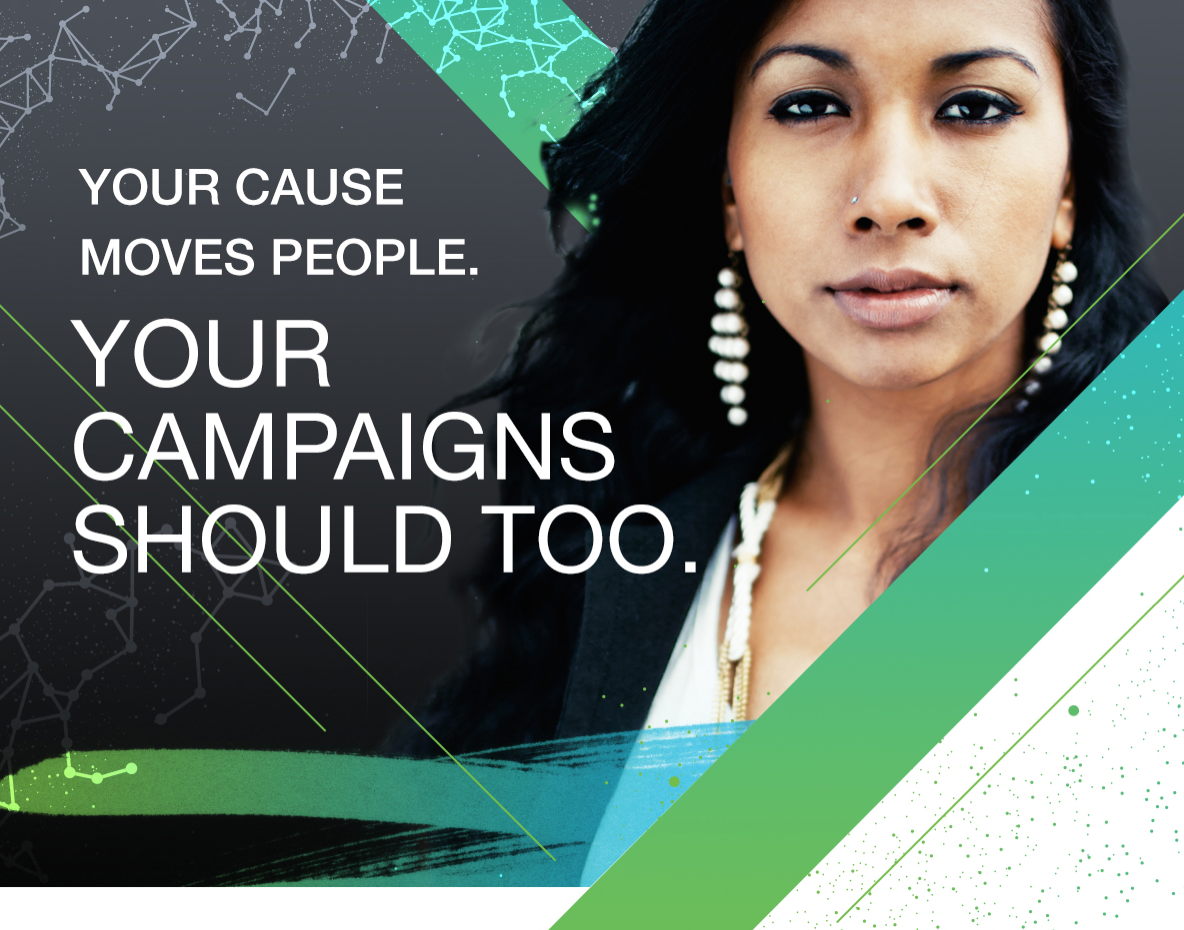Go Big With People Powered Campaigns
People want to go big in 2017!
This Thursday, we'll show you how on our webinar "The Secrets Behind People Powered Campaigns" with NetChange.
Your supporters are inspired to make an impact and bring their social networks, stories and ideas to the table. However, with the growing democratization of social change, the digital tactics we’ve come to know and rely on may not continue to gain the same traction.
The days of nonprofits having control of all aspects of their campaigns are over. Cause minded individuals are now taking the initiative to create their own change and rally support…and their efforts are working.
We’ve seen the power of campaigns like #GivingTuesday, #StandWithStandingRock, #BlackLivesMatter, and various political campaigns, that provide supporters with the resources and tools to engage their own communities. At the heart of these successful movements is a peer to peer engagement strategy—people who have a common sense of urgency about a cause connecting with each other through digital tools and social channels to activate change.
The opportunity for nonprofits is to create campaigns that facilitate deeper engagement and keep the following new rules in mind:
The game has changed:
- Citizen movements play an enormous role in leading social change
- People want meaningful participation, not a ladder of one-off actions
- Peer to peer engagement is key to scaling change
Citizen-powered movements play an enormous role in leading social change.
What does an effective people-powered campaign look like? Some of the best examples are perhaps advocacy campaigns that have initiated concrete policy outcomes or shifted public opinion beyond financial and geographical limitations.
The “Networked Change” report from NetChange evaluated 47 of most effective campaigns, ranging from the NRA to Occupy Wall Street, and concluded that campaigns that worked in partnerships with self-organized networks of people with clear goals and targets made an impact far beyond their level of resourcing.
The magic combination was a traditional advocacy nonprofit that provided a centralized campaign structure and unified rallying message to distributed groups of stakeholders, including individuals as free agents. In contrast, traditional organizations that controlled every aspect of the campaign couldn’t scale their campaigns, and loose networks of individuals who didn’t partner with traditional nonprofits lacked the infrastructure to make a sufficient impact.
The report also found that campaigns that actively consult their audiences and draw on their collective intelligence have access to new assets and power. In other words, nonprofits that facilitated grassroots participation were more innovative and made a greater impact faster than both traditional “command and control” models and networks of people without a centralized plan.
People want meaningful participation, not a ladder of one-off actions.
Stunning results can happen when people are aligned with shared goals, milestones, specific tasks, and opportunities to grow into leaders. As demonstrated by the Sanders campaign’s “super volunteers”—a campaign that entered the race with only 3% name recognition—an impact can be made far beyond your fighting weight with a structure and philosophy that empowers others to join you. With only 2 digital staff at the time, the campaign hosted the largest distributed political event in history with 2,700 kick-off parties in one night! This was accomplished because the campaign trusted volunteers to run events traditionally executed by campaign staff—they gave power to their people.
It’s this same people-powered principle that allowed volunteers of the Special Olympics to host over 100,000 events per year, or every 5 minutes! In both cases, the organizations found that if they provided a structure that empowered their highly competent volunteers to do a job, they would rise to the occasion every time.
In terms of influencing policy, the Sanders example also highlights an important shift in how people want to engage or be organized. Because information is so readily available, many already people “get it” and are ready to make an impact. This represents a fundamental shift from the widely adopted 1970’s Saul Alinsky organizing philosophy which aims to move the “unenlightened” through a series of engagement steps created by the organization called the “leadership ladder.” The problem with this approach today is that people are largely aware of the issues they signed up for and have their own ideas about steps to reaching a solution.
Peer to peer engagement is the key to scaling change
We almost exclusively think of P2P as a fundraising strategy, but it has the capacity to be much deeper than that. By giving more power to supporters, we can revolutionize citizen engagement—who produces content, who makes change, how culture is created. It’s an expression of an open society and medium of true democracy.
It’s campaigns that operate like a hashtag—ideas that many embrace, but no one owns—that allow for individual expression among peers and generate more commitment and ownership.
Would #GivingTuesday have emerged as the largest worldwide giving day in history if the founders controlled every aspect of the campaign—made everyone register, required a donation, didn’t rely on p2p engagement, and enforced tagging the brand vs. using a hashtag? Instead, the brilliant and humble, Belfer Center for Innovation & Social Impact, provided a centralized plan and message that encouraged diverse participation from organizations, corporations, and individuals.
In summary, giving power to your people allows for deeper engagement with supporters who can scale your mission through their network of peers. This year, experiment with strategies that give people the keys, and always provide a roadmap.



Leave a Comment